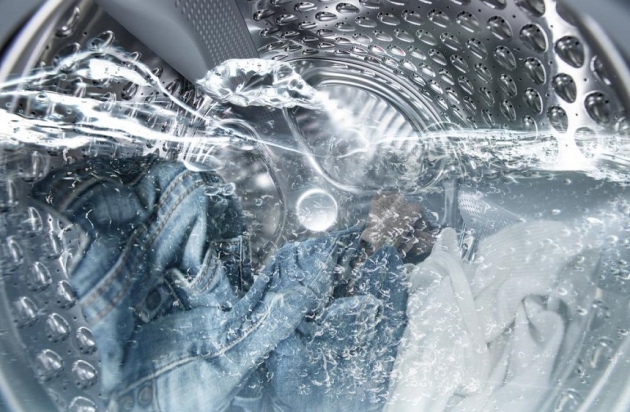Modern washing machines are equipped with a myriad of program settings, but many consumers remain confused about the temperatures that should be used for their clothing. In most cases the hotter the water, the greater the cleaning potential, but this may not be appropriate for all your clothing and could cause damage. So, here we will explore the temperatures you should be using for your laundry.
Using Hot Water
Most white clothing and linens can be washed in hot water. This will remove heavy soil and germs. Unfortunately, hot water can cause shrinkage, wrinkling, and fading of colors. If you try to wash your clothing in hot water, the colors may start to look splotchy, while delicate fabrics can lose their aesthetic appeal.
Using Warm Water
The majority of laundry can be washed using warm water. This mixture of hot and cold water provides a balance between color protection and removing soil. Some washing machines use a 50-50 ratio of hot and cold water, but newer models tend to mix 60-40. Warm water can usually be used without shrinking, wrinkling or fading.
Using Cold Water
Cold water is preferable for delicate items or bright colors that could fade or run at a higher temperature. If your items require cold water temperatures, but are dirty or heavily soiled, you will need to have a diligent pretreatment routine. You may need to pre-soak your items or wash them for longer to ensure that they are properly cleaned.
Choosing the Correct Washing Temperature
Since there is the potential for laundry mishaps, by washing at the wrong temperature, it is important to choose the correct washing temperature. Fortunately, there are several ways to determine the correct temperature. The most obvious is to check the clothing tag. The tag will provide any laundry or care special instructions. Most clothing will be labeled with the maximum wash temperature, so check your tags before you do any laundry.
You should also pre-treat any stains. This will allow clothing to be cleaned even if you are washing in warm or cold water. Cold water is not the most effective way to remove stains, but pre-treatment can offer the only solution for delicate fabrics that have become stained. You may need to be patient, as some pre-treatment takes time, but it is important to try to remove any stains before washing to ensure that they are as clean as possible.
If you are unsure about the washing temperature, you may want to try soaking your clothes in cold water before washing. Soaking can vary from five or ten minutes to overnight, but the tougher the stain, the longer you will need to soak the item. Soaking can help create a thorough clean even if you can only risk using a cold water cycle on your washing machine.
Checking Your Washing Machine Water Temperature
If you are still running into laundry issues, you may find that the water temperature of your washing machine is not accurate. In this type of scenario, a candy thermometer can be a useful tool. Check the temperatures of the hot, warm and cold water coming out of the machine. Hot water is typically 10 degrees colder when it arrives at your washing machine compared to leaving your water heater. Generally, hot water is 130ºf or above, while warm water is between 100ºf and 90ºf. Cold water is between 80ºf and 60ºf. If your water temperature drops below 60ºf, your clothes are not likely to be properly cleaned. If your washing machine is not delivering the correct temperature of water, your machine may need servicing or be ready for an upgrade.
Finding the Right Washing Machine
Now that you know about the ideal washing temperatures for your laundry, you have the basic knowledge you need to choose the right washing machine. If you’re ready to find the perfect washing machine for your home, consider starting your search with this collection of washing machines or contact a home appliance expert for specialized service.

